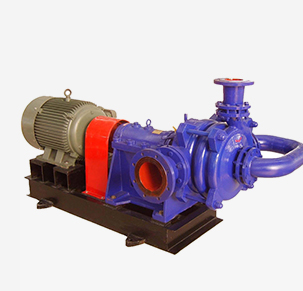Tagalog
- Afrikaans
- Albanian
- Amharic
- Arabic
- Armenian
- Azerbaijani
- Basque
- Belarusian
- Bengali
- Bosnian
- Bulgarian
- Catalan
- Cebuano
- Corsican
- Croatian
- Czech
- Danish
- Dutch
- English
- Esperanto
- Estonian
- Finnish
- French
- Frisian
- Galician
- Georgian
- German
- Greek
- Gujarati
- Haitian Creole
- hausa
- hawaiian
- Hebrew
- Hindi
- Miao
- Hungarian
- Icelandic
- igbo
- Indonesian
- irish
- Italian
- Japanese
- Javanese
- Kannada
- kazakh
- Khmer
- Rwandese
- Korean
- Kurdish
- Kyrgyz
- Lao
- Latin
- Latvian
- Lithuanian
- Luxembourgish
- Macedonian
- Malgashi
- Malay
- Malayalam
- Maltese
- Maori
- Marathi
- Mongolian
- Myanmar
- Nepali
- Norwegian
- Norwegian
- Occitan
- Pashto
- Persian
- Polish
- Portuguese
- Punjabi
- Romanian
- Russian
- Samoan
- Scottish Gaelic
- Serbian
- Sesotho
- Shona
- Sindhi
- Sinhala
- Slovak
- Slovenian
- Somali
- Spanish
- Sundanese
- Swahili
- Swedish
- Tagalog
- Tajik
- Tamil
- Tatar
- Telugu
- Thai
- Turkish
- Turkmen
- Ukrainian
- Urdu
- Uighur
- Uzbek
- Vietnamese
- Welsh
- Bantu
- Yiddish
- Yoruba
- Zulu
Telephone: +86 13120555503
Email: frank@cypump.com
Dec . 09, 2024 20:08 Back to list
Understanding the Functionality and Applications of Slurry Pumps in Various Industries
Understanding the Working Principle of Slurry Pumps
Slurry pumps are essential in industries where the movement of abrasive and viscous mixtures is necessary. These pumps are designed to handle solid-laden fluids, commonly referred to as slurries, which can consist of water mixed with various solid materials like sand, gravel, coal, and minerals. Understanding how slurry pumps work is crucial for optimizing their performance and ensuring longevity in their application.
The Basic Principles of Slurry Pumps
Slurry pumps operate on principles similar to those of conventional pumps, but they are specifically engineered to manage the complexities of slurries. The fundamental working principle revolves around converting mechanical energy into kinetic energy, which then helps in transporting the slurry through pipes to the desired location.
1. Impeller Design At the heart of a slurry pump is the impeller, which is the rotating component responsible for creating the flow. The impeller is usually designed with a wide and robust construction to handle the abrasive nature of slurry materials. Its design enables it to efficiently move thick and viscous fluids without clogging.
2. Volute Casing Surrounding the impeller is the volute casing, which helps in converting the kinetic energy of the fluid into pressure energy. The volute is designed to minimize turbulence and maximize efficiency, allowing for smooth slurry transportation. Its geometry can also be adjusted based on the specific requirements of the material being pumped.
3. Suction and Discharge The slurry pump operates through a suction inlet and a discharge outlet. As the impeller spins, it creates a low-pressure area at the suction side, which draws the slurry into the pump. This mixture is then accelerated by the impeller and forced out through the discharge outlet, propelling it along the desired path.
Considerations in Slurry Pump Operation
Several factors influence the performance and selection of slurry pumps, including the properties of the slurry, operational conditions, and the specific application. Understanding these factors is crucial
slurry pump working

- Particle Size and Density Slurry pumps can efficiently handle particular sizes and densities of solid particles. Larger or denser particles may require sturdier pump designs and specific materials to withstand wear.
- Viscosity The viscosity of the slurry affects how easily it flows through the pump. Higher viscosity slurries may necessitate more robust pumping solutions, often requiring special impeller designs or higher power ratings.
- Pump Material Given that slurry can be abrasive, the materials used in constructing the pump are vital. Common materials include hardened steel or rubber-lined components to protect against wear and tear.
- Flow Rate and Head Flow rate requirements vary across different applications, and so does the required head or pressure. It is essential to consider these parameters to select the right pump size and type, ensuring it can handle the expected load without issues.
Applications of Slurry Pumps
Slurry pumps are widely used across various industries, including mining, construction, wastewater treatment, and chemical processing. In mining, for example, they are used to transport slurry composed of water, minerals, and waste material. In construction, they manage the transportation of concrete slurries or other construction materials. Wastewater treatment facilities rely on slurry pumps to transport sludge, maintaining efficient plant operation.
Conclusion
In summary, slurry pumps play a critical role in managing the movement of solid-laden fluids across various industries. By understanding their working principles, as well as the considerations necessary for effective operation, industries can select and utilize slurry pumps that optimize both efficiency and longevity. Proper selection, maintenance, and operation of these pumps can lead to significant improvements in productivity and cost-effectiveness in handling challenging substances.
-
Heavy-Duty Mining Sludge Pumps - Wear-Resistant Slurry Handling
NewsAug.02,2025
-
Horizontal Split Case Pump with GPT-4 Turbo | High Efficiency
NewsAug.01,2025
-
ISG Series Pipeline Pump - Chi Yuan Pumps | High Efficiency, Durable Design
NewsAug.01,2025
-
Advanced Flue Gas Desulfurization Pump with GPT-4 Turbo | Durable & Efficient
NewsJul.31,2025
-
ISG Series Vertical Pipeline Pump - Chi Yuan Pumps | Advanced Hydraulic Design&Durable Construction
NewsJul.31,2025
-
ISG Series Vertical Pipeline Pump - Chi Yuan Pumps | Energy Efficient & Low Noise
NewsJul.31,2025










